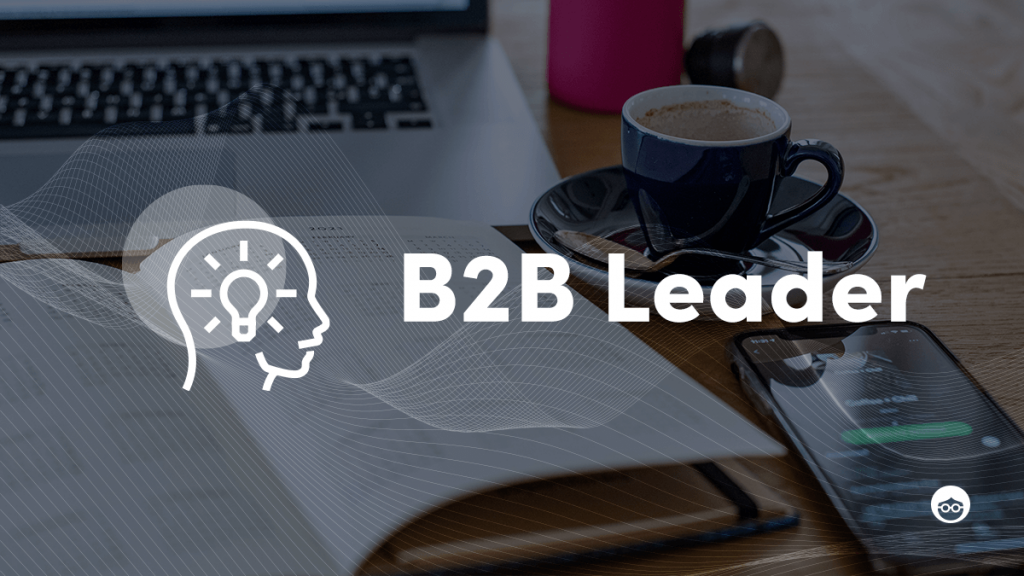B2B Lead Generation Strategy 2022: What to Look Out For

The COVID-19 pandemic, which has been around for almost two years now, has forever changed our livelihood and the way we do our businesses. On average, 62% of B2B companies around the world were forced to reduce their marketing expenses in response to the coronavirus outbreak during the first year of the pandemic. Only 18% of companies managed to keep their budgets on the same level as before.
In addition, a 2020 McKinsey report states that 90% of sales have completely moved to online channels, substituting face-to-face meetings with Zoom conferences and phone conversations. In some industries, like IT or marketing, the share of online interactions has been close to 100%. However, 46% of respondents believe that the effectiveness of this new digital sales approach is lower than the pre-pandemic one.
In these precarious conditions, generating leads, which has always been a challenge for B2B companies, has become even more complicated. To stay on board, B2B decision-makers need to keep up with the latest trends and adapt their business to the COVID-19 reality, taking advantage of the new lead generation strategies out there.
Best Lead Generation Strategies to Adapt in 2022
With a new year being just around the corner, now is the best time to optimize your business processes. Make sure to take into account these five lead generation strategies in 2022 and secure a stable lead flow into your sales pipeline for the next quarter.
1. Go digital!
If the previous two years haven’t forced you to move your business completely online just yet, in 2022, it should become your number one priority. In fact, 87% of B2B decision-makers believe that even if the pandemic ends tomorrow, the changes it has brought to the business world are there to stay for at least twelve more months, if not forever. Therefore, long zoom calls, numerous emails, and daily phone conversations are not going anywhere in 2022.
Just a few years ago, in 2017, the average B2B marketing department was allocating 41% of their budget to exhibitions and industry shows for lead generation purposes, while digital marketing received only 25% of the budget share in total. Five years later, it’s time to turn the tables around.
Investing your budget in offline marketing makes no sense if the majority of your potential leads are full-time, work-from-home employees. Instead, prioritize those online channels that bring you the most qualified leads, or outsource this task to someone who knows how to do it right.
2. Omnichannel marketing is essential
In B2B, there is an ongoing debate about what is better – inbound or outbound? The answer is both. Why should you choose if you can have the creativity of inbound and the freedom to contact whomever you want with outbound?
Multichannel outreach strategy implies creating more opportunities to connect with your potential client through the means of a variety of channels simultaneously: cold emails, cold calls, digital ads, content promotion, SEO optimization, social media. In times of a pandemic, all the digital channels are worth a shot.
In fact, outbound can boost your inbound efforts drastically (this effect is called outbound assist) and vice versa. For example, if after the first cold call to a lead, you send a relevant article via email to follow up on your conversation, you’ll achieve better results than if this person has just skimmed through your content while searching for something in Google.
Omnichannel marketing strategy, which includes combining both outbound and inbound strategies, can boost the exposure of your brand drastically and secure an online presence for your business. It can help you reach out to more leads who you might have never connected with otherwise. Therefore, don’t forget to include often neglected outbound channels into your next lead generation strategy and benefit to the maximum from the omnichannel approach.
3. Make use of marketing automation
Tracking lead generation processes remotely is a complicated task, especially if you use multiple channels together in your outreach campaign. That is why marketing automation tools were created. They help to keep track of all the marketing processes going on in the company through the means of one simple software.
These tools track and store information about each interaction occurring with each lead in your company, give access to a huge amount of analytics and KPIs to analyze, and allow you to orchestrate outreach through multiple channels at the same time.
Having all these functions located in one place makes the whole selling process much easier. By implementing marketing automation, you will optimize the work of your sales team, speed up the process of lead generation, and enhance the quality of your marketing campaigns.
4. Build a real connection with each lead
The pandemic has affected the way we interact with each other in daily life as well. Facebook, Netflix, and YouTube have received a sharp boost in the number of daily users. The increased number of hours we spend in front of our electronic devices has made us miss ordinary face-to-face conversations. Therefore, the last thing your leads want is to be treated just like another number when you reach out to them. Your potential clients want to receive a unique value-adding offer, to feel genuine emotions from each sales communication, and to be special for you and your business.
What it means in practice is that instead of focusing on the promotion of your product or services directly, you need to apply a persona-driven approach in your next lead generation campaign. This method implies appealing to the lead’s challenges and needs, their desires, personal interests, achievements, and opportunities for growth, all of which should be identified beforehand when building your business’s ideal customer profile and buyer persona. To help you create more persona-centric messages, here are a few email personalization hacks that might inspire you.
5. Measure and adapt
With the outbreak of a new COVID-19 variant just recently, no one knows what other alterations 2022 might bring to the business world. Therefore, a main lead generation tip for next year is to keep track of all the changes occurring and to be prepared to adjust to the new rules rapidly. Your most important job for the next year is to keep your finger on the pulse, tweak your lead generation strategy according to the market’s demand, and build flexibility within your team, so when the new challenges occur, they don’t catch you by surprise.
Besides that, when building your future lead generation strategy, take into account the current situation in the world and the possible future risks that may arise. For instance, instead of hoping for a comeback of old-fashioned conferences for B2B lead generation purposes, better try to organize an online event or an insightful podcast where the same goals can be achieved in a more COVID-free way.
Generate More Leads in 2022
The year 2022 might surprise us as the time when the world finally recovers from the post-pandemic shock. However, it absolutely doesn’t mean going back to the old ways of conducting business. New trends in B2B sales, which became apparent during these last couple of years, are going to be more relevant than ever. Take advantage of digital innovations and gain momentum in sales with these new lead generation strategies for your business.












